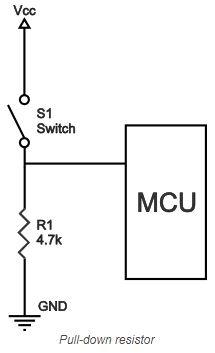Random arc signal lost
- phillc54
-

- Offline
- Platinum Member
-

- Posts: 5711
- Thank you received: 2093
Yes
Something else you could experiment with in <machine-name>-connections.hal
Unlink the plasmac Arc OK input .
Add an extra debounce component.
Net the Arc OK signal from the Mesa card to the debounce input and the debounce output to PlasmaC Arc OK .
I really need to start writing things down. I had this though on the way to work this morning! I actually thought "I wonder if the Arc-OK is de-bounced". I think the Hypertherm closes a set of dry contacts, so it could be that there needs to be a small debounce before things get under way. Does that mean this stuff is really starting to make sense?!
Probably not required, each debounce "unit" in a servo thread is normally only 1mSOk, I just looked, the Hypertherm definitely closes dry contacts. I wonder if that's the problem?
Could you offset the debounce delay by then making your pierce delay a bit shorter, or maybe it really doesnt matter that much?
Please Log in or Create an account to join the conversation.
- snowgoer540
-

- Offline
- Moderator
-

- Posts: 2529
- Thank you received: 858
Yes
Something else you could experiment with in <machine-name>-connections.hal
Unlink the plasmac Arc OK input .
Add an extra debounce component.
Net the Arc OK signal from the Mesa card to the debounce input and the debounce output to PlasmaC Arc OK .
I really need to start writing things down. I had this though on the way to work this morning! I actually thought "I wonder if the Arc-OK is de-bounced". I think the Hypertherm closes a set of dry contacts, so it could be that there needs to be a small debounce before things get under way. Does that mean this stuff is really starting to make sense?!
Probably not required, each debounce "unit" in a servo thread is normally only 1mSOk, I just looked, the Hypertherm definitely closes dry contacts. I wonder if that's the problem?
Could you offset the debounce delay by then making your pierce delay a bit shorter, or maybe it really doesnt matter that much?
Would that look like this:
loadrt debounce cfg=4
#net plasmac:arc-ok-in hm2_7i96.0.gpio.010.in => plasmac.arc-ok-in
net plasmac:arc-ok-in hm2_7i96.0.gpio.010.in => debounce.0.3.in
net plasmac:arc-debounce debounce.0.3.out => plasmac.arc-ok-inEvery time I wrap my head around HAL, time passes, and then it gets fuzzy.
Please Log in or Create an account to join the conversation.
- phillc54
-

- Offline
- Platinum Member
-

- Posts: 5711
- Thank you received: 2093
That looks OK to my bloodshot eyesgs Would that look like this:
loadrt debounce cfg=4 #net plasmac:arc-ok-in hm2_7i96.0.gpio.010.in => plasmac.arc-ok-in net plasmac:arc-ok-in hm2_7i96.0.gpio.010.in => debounce.0.3.in net plasmac:arc-debounce debounce.0.3.out => plasmac.arc-ok-in
Please Log in or Create an account to join the conversation.
- snowgoer540
-

- Offline
- Moderator
-

- Posts: 2529
- Thank you received: 858
That grape juice sneaks up on you, especially if it actually tastes like grape juice (my preference for wine). It's been a week, so there's some bourbon in my future Friday evening!
That looks OK to my bloodshot eyesgs Would that look like this:
loadrt debounce cfg=4 #net plasmac:arc-ok-in hm2_7i96.0.gpio.010.in => plasmac.arc-ok-in net plasmac:arc-ok-in hm2_7i96.0.gpio.010.in => debounce.0.3.in net plasmac:arc-debounce debounce.0.3.out => plasmac.arc-ok-in
At any rate, LinuxCNC will complain pretty hard if we've got it wrong anyhow
Testing is required, but it does make me wonder since they are closing a relay (as I am sure most plasma companies are), if the arc-ok input should be debounced by default? I do recall reading people saying similar things while cutting from time to time.
I hope this sorts it out!
Please Log in or Create an account to join the conversation.
- phillc54
-

- Offline
- Platinum Member
-

- Posts: 5711
- Thank you received: 2093
Please Log in or Create an account to join the conversation.
- rodw
-

- Away
- Platinum Member
-

- Posts: 11571
- Thank you received: 3885
The other thing that stands out is these are happening a while after a machine is commissioned. I had exactly the same problem with my Everlast and I was very despondent becasue I could not find a solution, but a couple of mates put their heads together and did an armchair diagnosis and a simple proposed fix which was spot on. Its possible your issue is exactly the same as my problem.
So let me explain.
The Mesa card is a high impedance device. That means there is high resistance between inputs and ground. I'll let you dig though the manual but the impedance (resistance) is mentioned there. So that means there is a very low current flowing through the ArcOK circuit and through the dry contacts inside the plasma cutter.. Dry contacts (relays) generally have a minimum current rating spec and due to the high impedance, the current in the ArcOK circuit could be less than that minimum spec.
So what happens is that oxide builds up on the dry contacts and eventually the relay displays intermittent random faults and won't turn on. Does that sound like your machine?
So the solution is to add a pull down resistor to the ArcOK input. This resistor has to be sized to ensure the minimum current is exceeded and can also handle the power in the circuit (Watts). In my case, I was able to locate the relay in the Everlast and track down the data sheet. The minimum current rating was 100 mA. My advisory panel crunched some numbers and announced that I should use a 1K, 1 watt resistor from the input to my 24V field power ground. They said to keep the resistor up in the air as it could get very hot!
They also warned me that it might take a few cycles to burn through the accumulated oxide but it would eventually come good. They were right!
So after a few cycles of ArcOK, the problem was completely solved and never happened again!
I remain very grateful for my silver haired advisory panel who were old enough to have extensive experience in analog circuits!
And I kept that resistor when i upgraded to my thermal dynamics. It has never faulted!
Please Log in or Create an account to join the conversation.
- snowgoer540
-

- Offline
- Moderator
-

- Posts: 2529
- Thank you received: 858
So the solution is to add a pull down resistor to the ArcOK input. This resistor has to be sized to ensure the minimum current is exceeded and can also handle the power in the circuit (Watts). In my case, I was able to locate the relay in the Everlast and track down the data sheet. The minimum current rating was 100 mA. My advisory panel crunched some numbers and announced that I should use a 1K, 1 watt resistor from the input to my 24V field power ground. They said to keep the resistor up in the air as it could get very hot!
I'm not really sure I follow. It would help to see where you placed the resistor in your circuit for this.
It's my understanding that a pull down resistor by definition will not add current to the relay contacts as you are describing, it will just pull the voltage on the pin to ground to ensure that the pin stays low (see picture below). The only way I could see this helping is it may prevent the pin from floating as much while changing states.
I would think the only way to add current to the relay would be to put the resistor in series with the circuit. Like this:
At any rate, I wonder if you could have also solved this problem by debouncing the input signal... a little coding
Please Log in or Create an account to join the conversation.
- rodw
-

- Away
- Platinum Member
-

- Posts: 11571
- Thank you received: 3885
Please Log in or Create an account to join the conversation.
- snowgoer540
-

- Offline
- Moderator
-

- Posts: 2529
- Thank you received: 858
The isolated inputs use opto-isolators with a 4.7K input series resistance. This results in an approximate current draw of 5 mA at 24V. The inputs will operate with +-4V to +-36V signals relative to input common. Isolated inputs are relatively slow and not suited for signals faster than about 5 KHz. For sinking type inputs, the input common pin is grounded and a +4 to +36V signal is applied to the input pins to activate the input. For sourcing type inputs, the input common is connected to +5 to +36V and the input pins are grounded to activate an input.
So again, to get more current draw through the circuit, I'd think you'd need to modify the series resistance to achieve a 100mA draw.
I think it is important to note that different boards may require different approaches, because I do read this in the 7i76e manual:
The 7I76E field inputs have a nominal input resistance of 20K Ohms to field power ground. 7I76E inputs sense positive input voltages above a preset threshold. For best general purpose use, default input threshold is 50% of the field power supply voltage with 10% hysteresis. That is with a 24V field voltage an input must be brought to 60% of 24V = 14.4V to be sensed as high and then brought to 40% of 24V = 9.6V to be sensed as low. These accurate thresholds and hysteresis allow high speed field signal detection while maintaining excellent noise immunity.
I guess we will find out this evening, but I really think your results could have been achieved by a simple debounce. But maybe you watched the pin with the halscope and the signal was completely lost?
I'm not an electrical engineer, but I still think that all you really needed was a debounce. But I guess we will find out. I'
Please Log in or Create an account to join the conversation.
- tommylight
-

- Offline
- Moderator
-

- Posts: 21098
- Thank you received: 7205
Please Log in or Create an account to join the conversation.


